
In this post, we detail the various options available for travelling from Alicante to Elche. These two cities in the Valencian Community are connected by a range of transport options that facilitate the journey between them. Whether for leisure or business, getting from Alicante to Elche is straightforward thanks to the multiple alternatives available that cater to different needs and budgets.
The distance between Alicante and Elche is about 30 kilometres. Here we tell you the best ways to make this journey:
How to get from Alicante to Elche: all the options
If you wish to travel from Alicante to Elche, you can choose between taxi, bus, train, or car.
Taxi
Opting for a taxi is one of the quickest and most comfortable ways to travel from Alicante to Elche. On Mitaxi.net, you can find the best prices for this service; you can book your taxi from Alicante to Elche starting at 36 euros. The journey takes approximately 30 minutes, making it an excellent option for those seeking privacy and speed.
Bus
The bus service between Alicante and Elche is frequent and economical. Buses regularly depart from Alicante’s central bus station and arrive at Elche’s bus station, ensuring a constant connection throughout the day. The price for standard tickets is 2.10 euros, and the journey time is 35 minutes. Buses run from 6:30 to 22:15 with a frequency of about 40 minutes.
Train
The commuter train is another option for travelling between Alicante and Elche. The fare is around 4 euros, and the journey takes approximately 35 minutes. Train services offer several departures daily, from 5:45 to 22:30, with a frequency of 1 hour.
Car
For those who prefer the independence and flexibility of road travel, driving is a viable option. The most direct route between Alicante and Elche is via the A-70 or CV-86, depending on your starting point. This car journey has an estimated time of 30 minutes and offers the opportunity to enjoy the landscape.
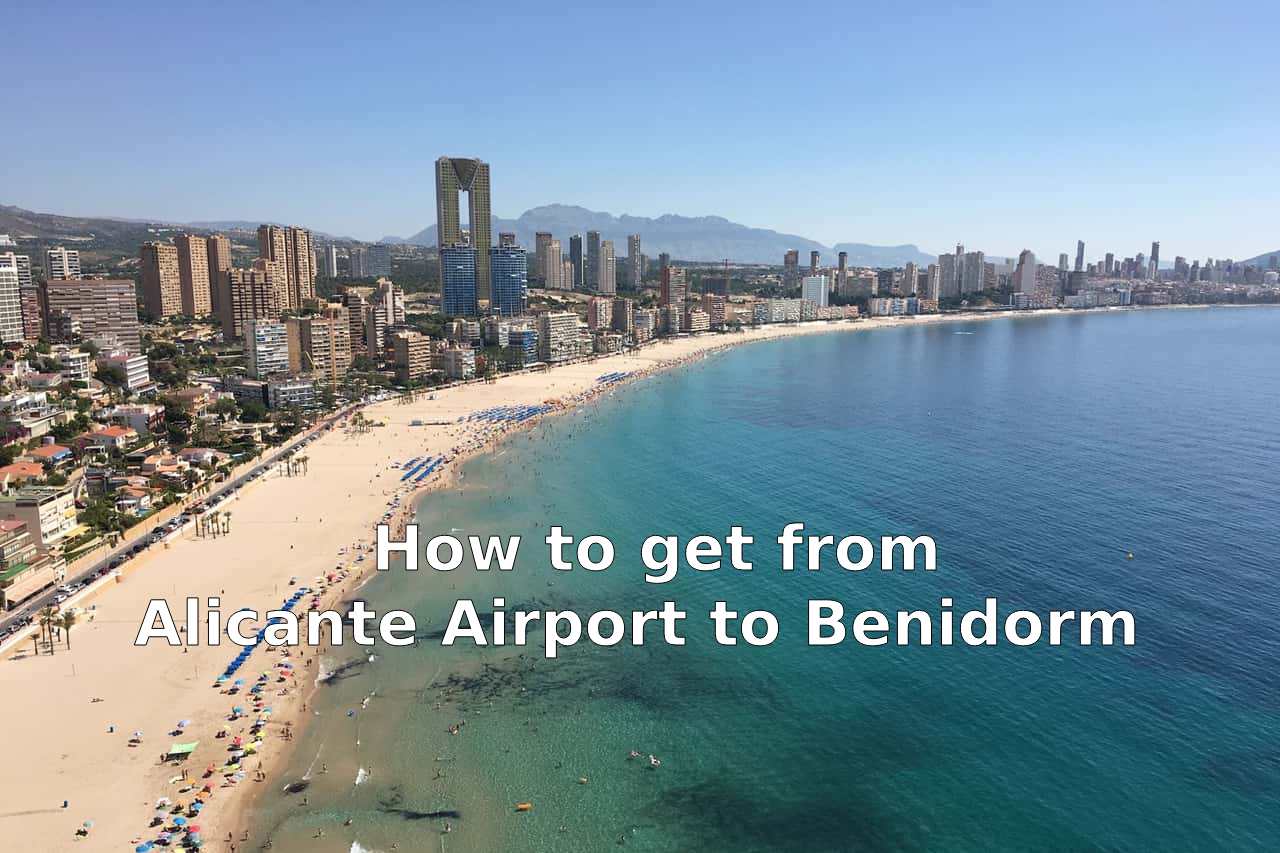
In this post, we’ll discuss the various options available for traveling from Alicante Airport to Benidorm. Alicante-Elche Airport, located in the southeast of the Costa Blanca, is a key starting point for exploring tourist destinations like Benidorm. Known for its sunny climate and lively nightlife, Benidorm offers beautiful beaches, delicious cuisine, and a wide range of activities.
The distance between the airport and Benidorm is about 60 kilometers, and there are several transportation options available. We’ll present the best ways to make this journey:
How to get from Alicante Airport to Benidorm: all the options
If you want to travel from Alicante Airport to Benidorm, you can choose from taxi, bus, TRAM, or car.
Taxi
A taxi is a fast and comfortable option, perfect for those looking for a direct and hassle-free journey. On Mitaxi.net, you can book a taxi from Alicante Airport to Benidorm for 69€, with a journey time of about 40 minutes.
Bus
Bus services from Alicante Airport to Benidorm are available, with prices starting from 10.45€ and 26 daily services. There are direct buses that take 45 minutes and others with a stop in Alicante that take 55 minutes. The first bus departs at 08:00 and the last at 21:00, offering a fast and comfortable journey.
TRAM
To get to Benidorm by TRAM, first take a bus (line C6) to Alicante. Buses run every 20-60 minutes, 24 hours a day, costing 3.85€, with a 14-minute journey time. There’s no direct TRAM line from the airport to Benidorm, so this transfer is necessary. Once in Alicante, take the TRAM to Benidorm. The ticket costs 2.80€, with a frequency of 30 minutes. The journey takes 1 hour and 10 minutes, as it makes several intermediate stops. The first service departs at 5:41 and the last at 22:11.
If you’re looking for other alternatives, check out this post on how to get from Alicante to Benidorm.
Car
Driving from Alicante Airport to Benidorm is another viable option. It’s a direct route that allows you to enjoy the beautiful coastal landscape and gives you the freedom to explore at your own pace. The most common route is via the AP-7 motorway, known as the Autopista del Mediterráneo, which directly connects the airport to Benidorm. The approximate journey time is about 40 minutes.
Each of these options offers a different experience, so you can choose the one that best suits your needs and preferences for your trip to Benidorm.
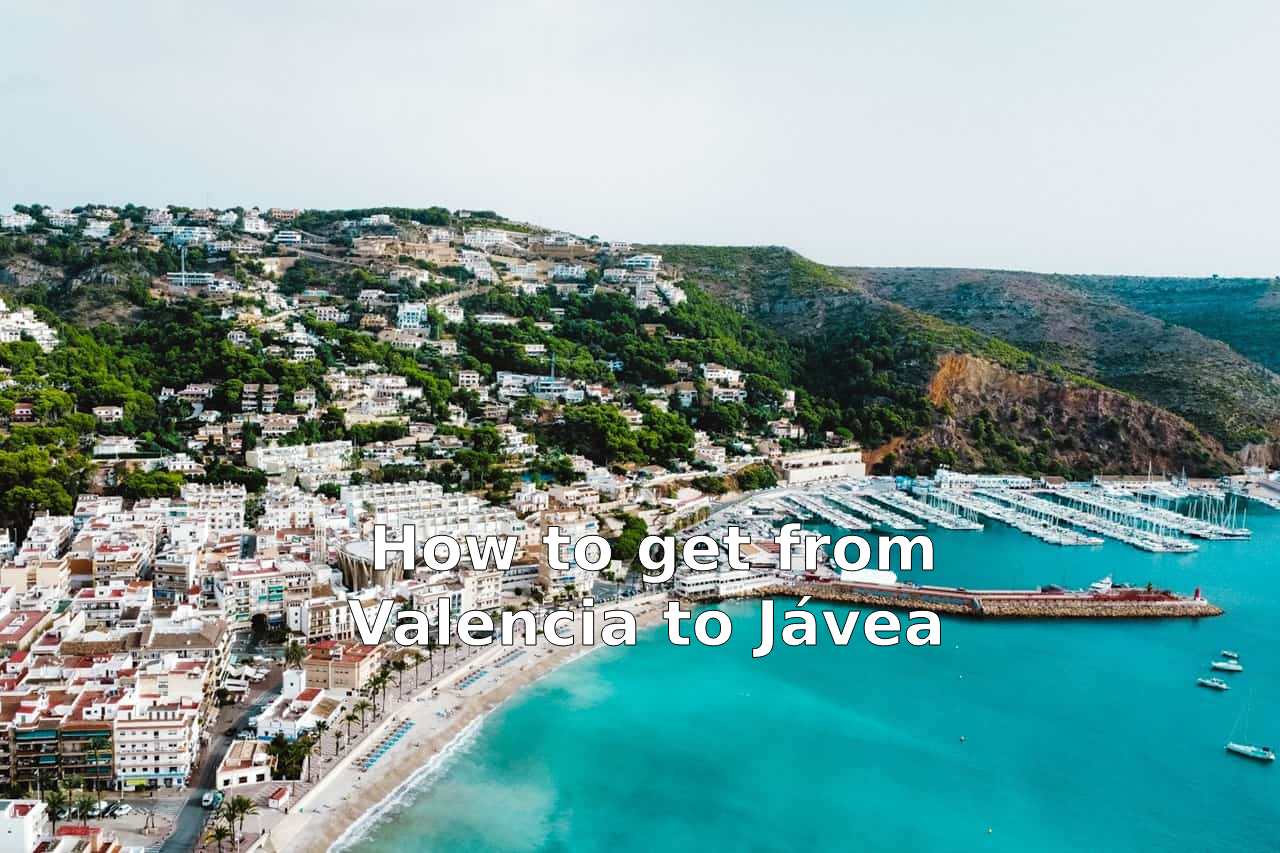
In this post, we share the different options available for getting from Valencia to Jávea. Valencia, with its privileged location on the Mediterranean coast, is an ideal destination that combines rich history with modernity. From strolling along the old Turia riverbed to admiring the Quart Towers, Valencia has much to offer. Jávea, on the other hand, is a paradise with stunning coves, fine sandy beaches, and crystal-clear waters, known for the Church of San Bartolomé and the Montgó Natural Park.
These two cities are separated by about 115 kilometers. Here we tell you what the best options are for making this journey:
How to go from Valencia to Jávea: all the options
If you want to go from Valencia to Jávea, you can travel by taxi, bus, train, or car.
Taxi
For a comfortable and quick journey from Valencia to Jávea, the taxi is an excellent option. Although it is the most expensive method, it provides a direct and hassle-free route. On Mitaxi.net, you can book a taxi from Valencia to Jávea from 156€ with an approximate duration of 1 hour and 25 minutes. We also have minibuses for up to 30 passengers, and buses for up to 54, ideal for large groups.
Bus
Travelling by bus is an affordable and comfortable alternative. There are services from the Bus Station in Valencia, the AVE Station in Valencia, and Valencia Airport, with a destination to the Bus Station in Jávea. The ticket price costs 13.30€ from the stations and 17.15€ from the airport. The journey lasts between 2 hours and 15 minutes and 3 and a half hours (depending on the stops). There are 15 buses a day, from 7:15 to 19:35 (about one every hour).
Train
This option involves a transfer in Gandía, as there is no direct train connection to Jávea. The itinerary begins with a train journey from Valencia to Gandía, with a daily departure around 14:00. The cost of the ticket is 3.20€ and the journey lasts approximately 1 hour. Once in Gandía, you will have to take a bus or a taxi to continue the journey to Jávea. The bus service from Gandía to Jávea costs 5€ and takes between an hour and a half and 2 hours (depending on the number of stops). There are 7 a day (2 direct), from 8:20 to 20:35.
Car
Driving gives you the freedom to explore the coast at your own pace. The route is direct and offers beautiful views of the Mediterranean landscape. To reach your destination, you will have to follow the AP-7, heading south, until you find the indicated exit for Jávea. The journey takes approximately 1 hour and 25 minutes, but may vary depending on traffic.
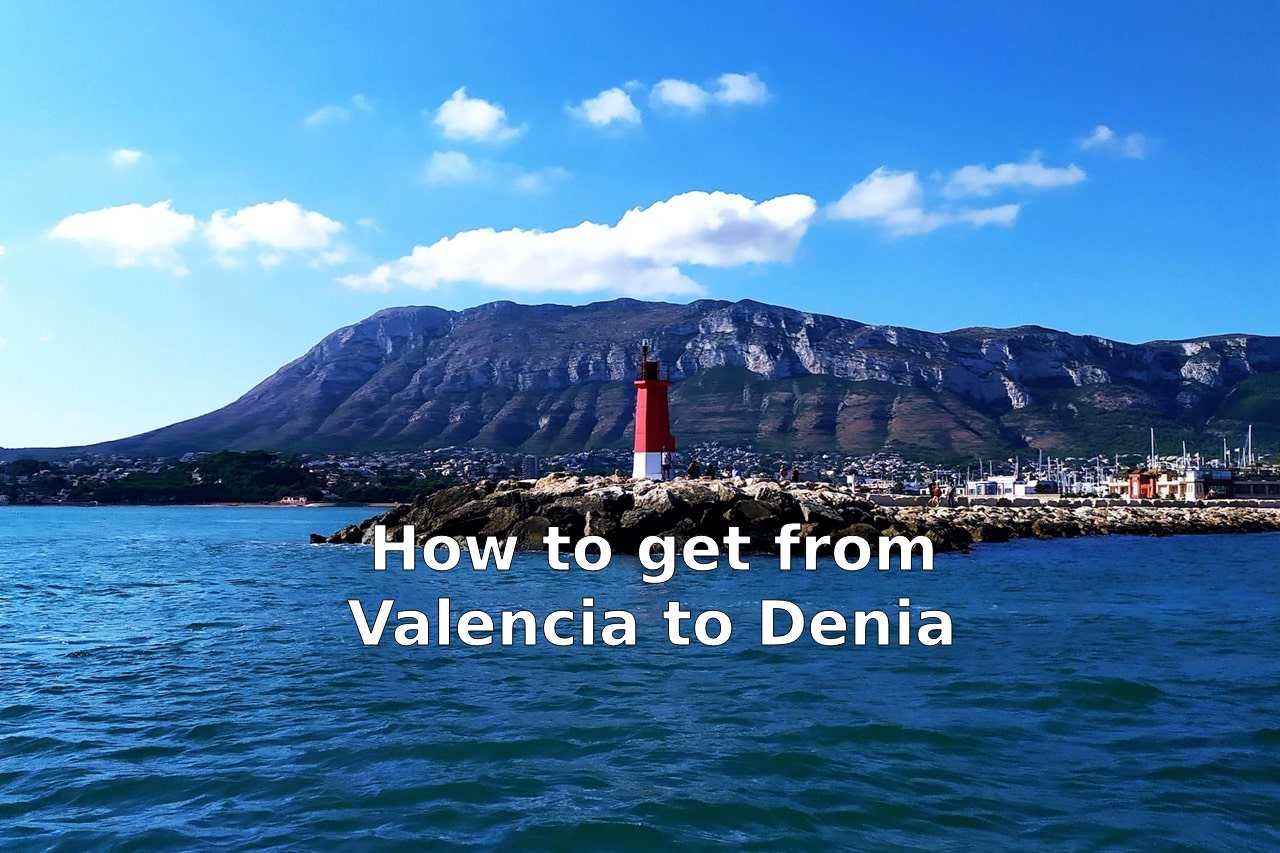
In this post, we explore the various options you have for travelling from Valencia to Denia. Valencia, with its blend of history and modernity, enchants its visitors. From the stunning City of Arts and Sciences to the historic Palace of Justice, Valencia offers an endless array of attractions. On the other hand, Denia, located on the Mediterranean coast, is known for its beautiful beaches, historic castle, and diverse cultural and gastronomic offerings.
Separated by approximately 100 kilometres, travelling from Valencia is an experience filled with discoveries and natural beauty. Here we present the best options for making this journey:
How to get from Valencia to Denia: all the options
If you wish to travel from Valencia to Denia, you can choose a taxi, bus, train, or car.
Taxi
Opting for a taxi from Valencia to Denia is ideal for those seeking comfort and speed. Though it’s the less economical option, it provides a direct and hassle-free journey. At Mitaxi.net, you can book a taxi from 141€ with an approximate duration of 1 hour and 15 minutes. Additionally, we offer minibuses for up to 30 passengers, perfect for large groups.
Bus
You can also choose a bus service from Valencia to Denia, offering a comfortable and affordable trip. Buses depart from Valencia Bus Station and arrive at Denia Bus Station, located in Mestre Monjo street. The ticket price starts from 12.30€, and the journey takes between 1 hour and 30 minutes to 2 hours and 20 minutes (depending on the number of stops). There are 19 buses a day (3 direct), running from 6:00 to 19:35 (approximately every 45 minutes).
Train
For those preferring the train, a change is necessary as there are no direct services to Denia. The route begins with a train journey from Valencia to Gandia, with one departure a day around 14:00. The ticket costs 3.20€, and the journey takes 1 hour. Afterward, you need to take a bus or taxi from Gandia to Denia. The bus service from Gandia to Denia costs 3.95€ and takes between 45 minutes to 1 hour and 10 minutes (depending on the stops). There are 10 buses a day (4 direct), from 7:00 to 20:35.
Car
If you prefer the freedom of driving, the road route from Valencia to Denia is quite direct and offers beautiful views of the Mediterranean landscape. You’ll need to take the AP-7 motorway and head south until you reach the Denia exit. The approximate journey time by car is 1 hour and 15 minutes, depending on traffic.
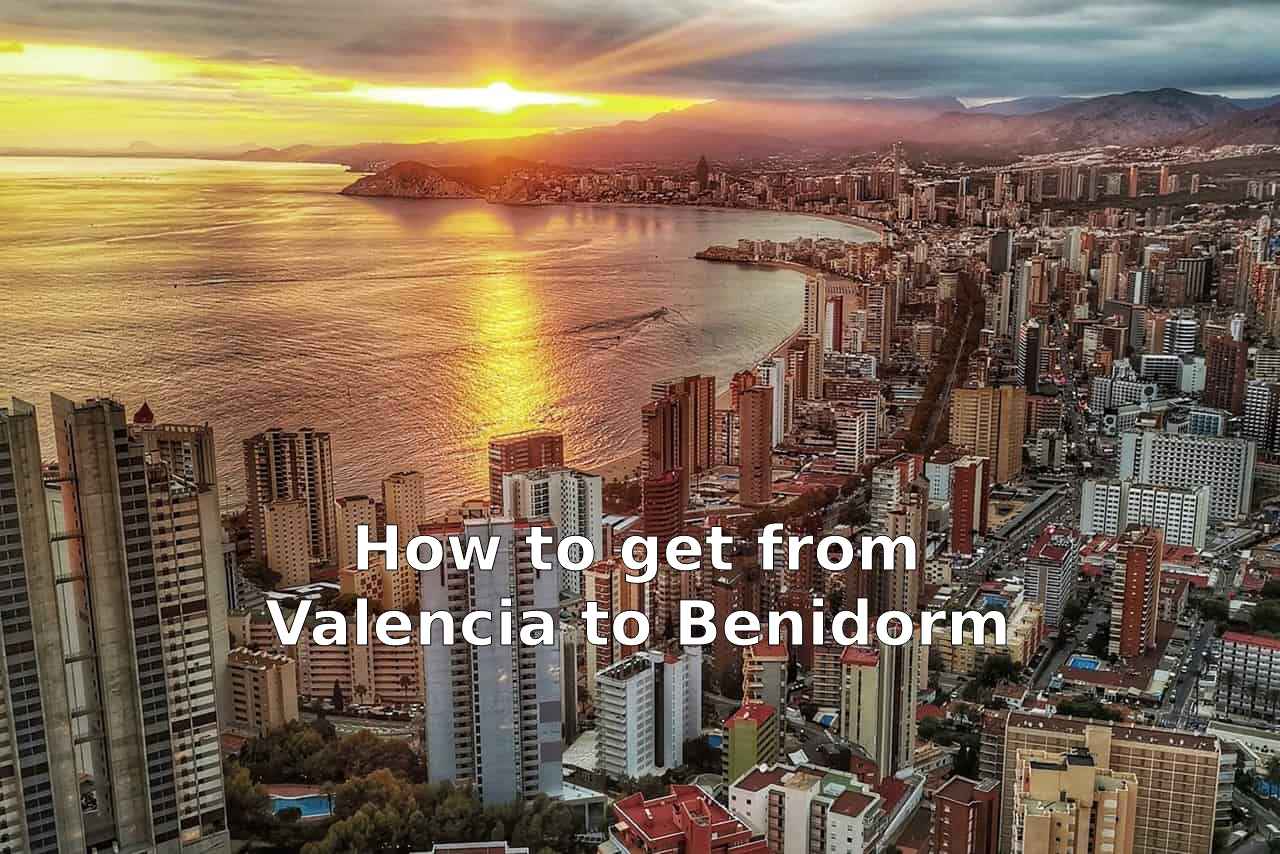
In this post, we detail the various options available for travelling from Valencia to Benidorm, two iconic cities on the east coast of Spain. Valencia, a city that perfectly blends modernity and tradition, is the ideal starting point to explore the region. On the other hand, Benidorm, known for its towering skyscrapers and dreamy beaches, offers a cheerful and welcoming atmosphere. Separated by a journey of approximately 140 kilometres, these cities provide a diverse and exciting travel experience in the Spanish Levante.
Here we present the best options for travelling from Valencia to Benidorm:
How to get from Valencia to Benidorm: all the options
If you want to travel from Valencia to Benidorm, you can choose between a taxi, bus, train, or car.
Taxi
Travelling by taxi from Valencia to Benidorm is ideal for those seeking comfort and speed. It’s the least economical option, but offers a direct, hassle-free journey. At Mitaxi.net, you can book a taxi from Valencia to Benidorm starting from 188€ with an approximate duration of 1 hour and 30 minutes. Additionally, we offer minibuses for up to 30 passengers.
Bus
The bus is a practical and economical option for travelling between Valencia and Benidorm. Bus services run regularly from Valencia Bus Station to Benidorm Bus Station. The ticket price is 18.30€, and the journey on direct transfers takes about 2 hours.
Train
For travellers who prefer the train, you can take a train from Valencia to Alicante and then change to the TRAM to get to Benidorm. This is the slowest option, as the entire journey will take you about 4 hours. The price of both tickets is around 13€ (9.55€ for the train plus 2.80€ for the TRAM).
Check out this post on how to get from Alicante to Benidorm.
Car
If you prefer the freedom of travelling at your own pace, driving is a good alternative. The quickest route is via the AP-7 motorway, with an approximate duration of 1 hour and 30 minutes.
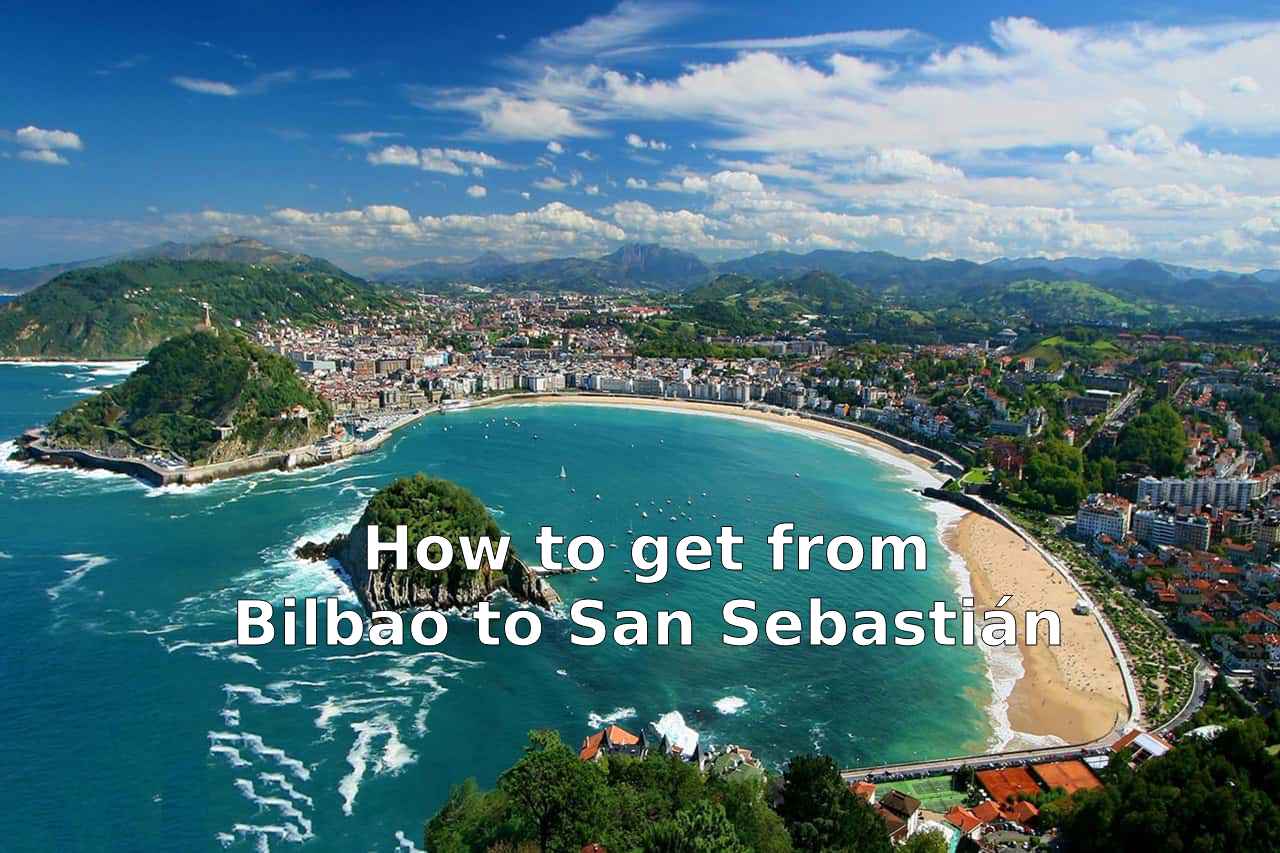
In this post, we share the different options available for travelling from Bilbao to San Sebastián, a gem on the Basque Country coast and a must-visit destination if you’re in Bilbao. Separated by about 100 kilometres, these two cities offer a unique experience in the north of Spain.
Here we present the best options for travelling from Bilbao to San Sebastián:
How to get from Bilbao to San Sebastián: all the options
If you want to travel from Bilbao to San Sebastián, you can choose between a taxi, bus, train, or car.
Taxi
Opting for a taxi from Bilbao to San Sebastián is ideal for those seeking comfort and speed. It’s the most expensive option, but it offers a direct, hassle-free journey. At Mitaxi.net, you can book a taxi from Bilbao to San Sebastián starting from 169€. The journey takes about 1 hour.
Bus
The bus is a practical and economical option for travelling between Bilbao and San Sebastián. Regular services are offered from Bilbao’s intermodal station, located next to San Mamés train station, to Donostia’s bus station, very close to the city centre. The journey lasts about 1 hour and 20 minutes, and the ticket price is 7.51€. It’s an excellent choice for those seeking a balance between comfort and economy.
Train
For travellers who prefer the train, the E1 line of Euskotren covers the journey between Bilbao and San Sebastián in approximately 3 hours and 30 minutes. Although it’s a slower option due to multiple stops, it’s also one of the most economical, with tickets at only 6.50€. Trains depart from Bilbao’s Matiko station, and a change at Zumaia is required to reach the Amara Donostia station in San Sebastián.
Car
If you prefer the freedom of travelling at your own pace, driving is a good option. The quickest route is the AP-8 motorway, though you should consider the cost of fuel and tolls, which add up to about 15.30€. The journey takes around 1 hour. If you decide to take the coastal road, the journey extends to over three hours, but it allows you to explore the beautiful Basque coast and visit places like San Juan de Gaztelugatxe, Bermeo, Lekeitio, Zumaia, and Getaria.
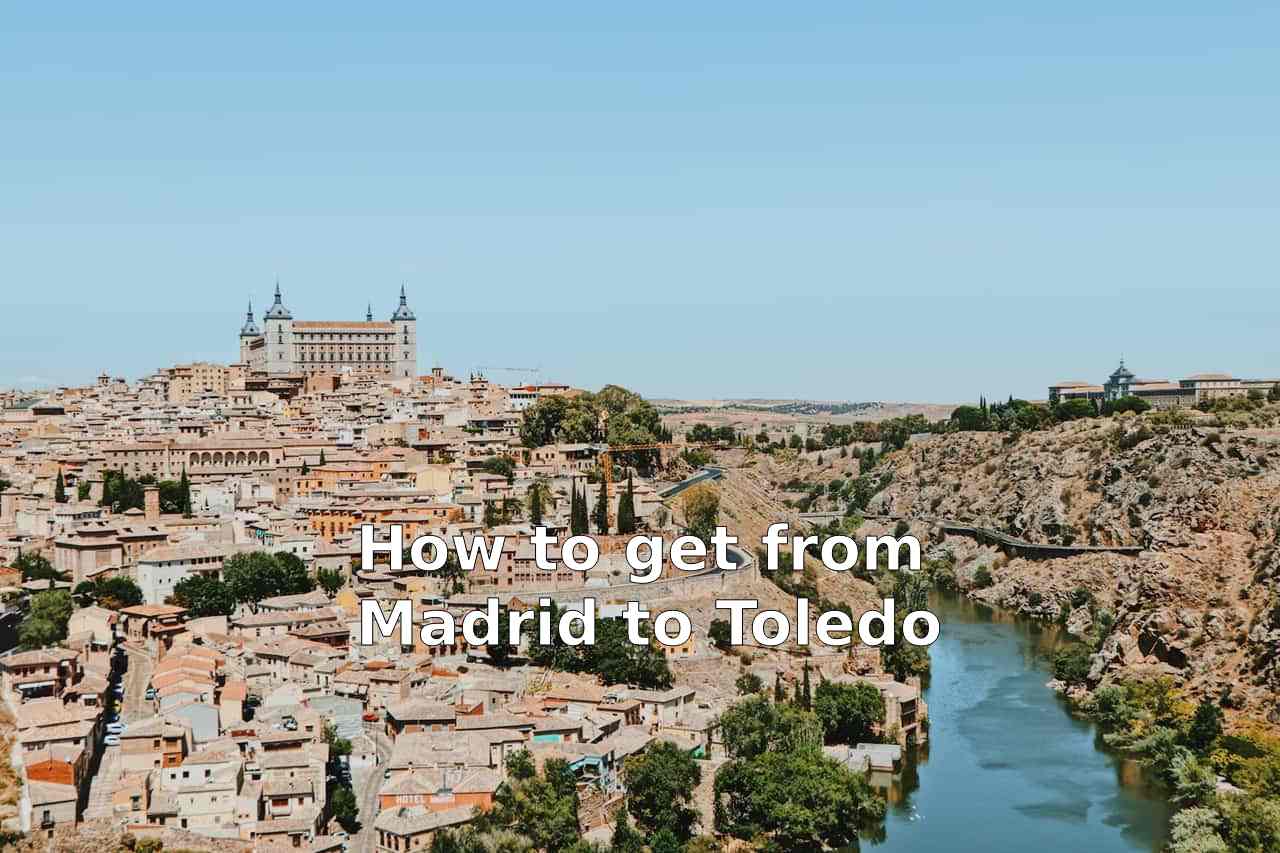
In this post, we outline the various options available for travelling from Madrid to Toledo, the “city of the three cultures”, an essential destination for those visiting the capital. Just 72 kilometres away from Madrid, this heritage city offers a rich blend of history and culture.
Below, we present the best options for this journey:
How to get from Madrid to Toledo: all the options
If you wish to travel from Madrid to Toledo, you can opt for a taxi, bus, train, or car.
Taxi
Choosing a taxi from Madrid to Toledo is ideal for those seeking comfort and speed. Although it’s the priciest option, it offers a direct journey without the hassle of timetables or changes. At Mitaxi.net, you can easily book a taxi from Madrid to Toledo. The fare for this route starts from 96.60 euros, and the journey takes about 50 minutes.
Train
The train is one of the quickest and most efficient ways to travel between Madrid and Toledo. The high-speed AVANT trains connect Madrid with Toledo in just 33 minutes, departing from Madrid-Puerta de Atocha station. Priced at 13.90€ per journey, it’s an affordable and convenient option. Moreover, there are discounts available for children and those under 4 years old. It’s advisable to purchase tickets in advance, especially during peak season.
Bus
Travelling by bus is an economical alternative for those looking for a more affordable option. Buses covering the route take between 1 hour and 1 hour and a half, departing from the Plaza Elíptica interchange in Madrid. With a ticket price of 6.18€ for a one-way journey, it’s a practical choice for many travellers.
Car
For those who prefer the freedom to travel at their own pace, driving is an excellent choice. The most common route is the A-42, known as the Toledo motorway. However, it’s important to be aware of traffic restrictions in Toledo’s historic centre and the challenges of parking. The journey along this route takes about 50 minutes.
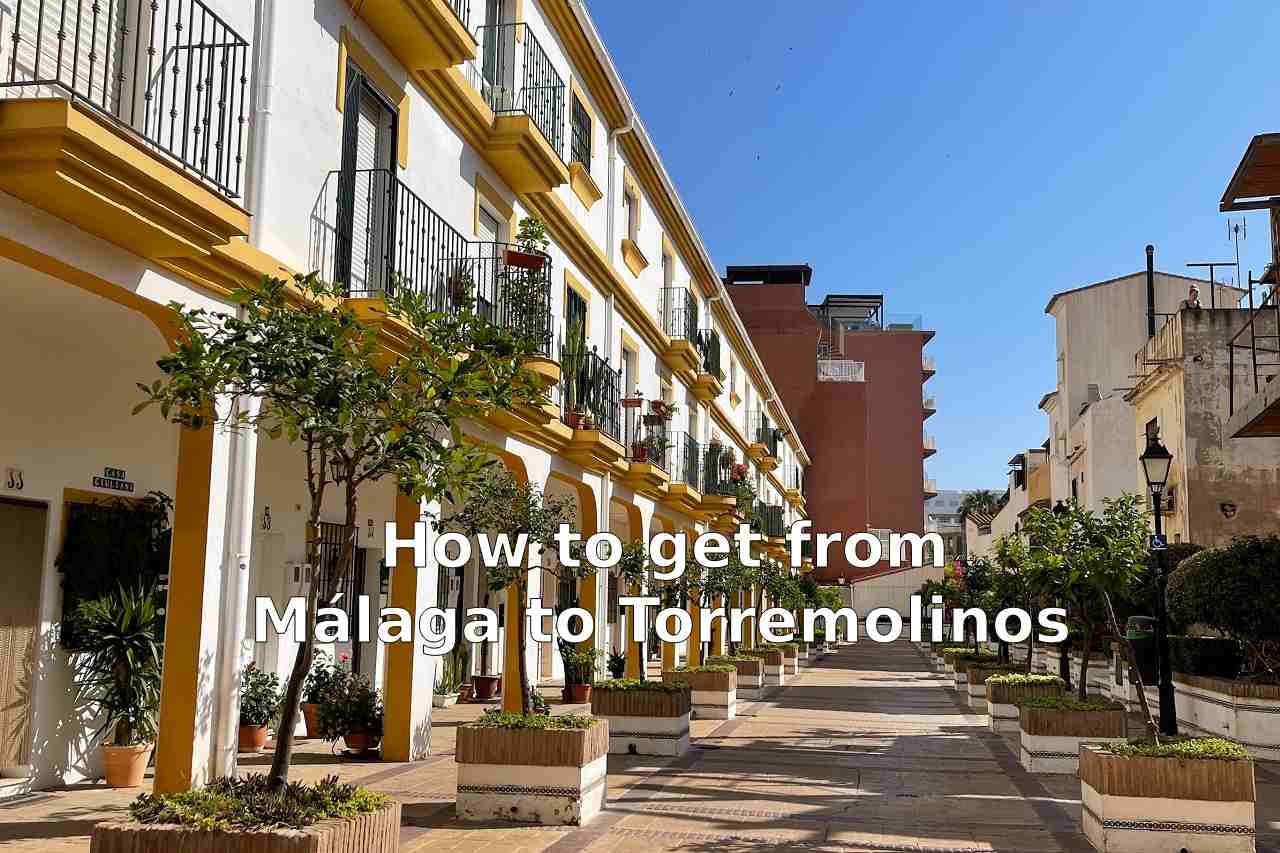
In this post, we outline the various options available for travelling from Málaga to Torremolinos, a popular coastal town on the Costa del Sol. Just a few kilometres away from Málaga, Torremolinos is an ideal destination for a day trip or a longer holiday.
Below, we present the best options for this journey:
How to get from Málaga to Torremolinos: all the options
If you wish to travel from Málaga to Torremolinos, you can opt for a taxi, bus, train, or car.
Taxi
Taking a taxi from Málaga to Torremolinos is a great choice for those seeking a quick and comfortable journey without the hassle of timetables or changes. At Mitaxi.net, you can easily book a taxi from Málaga to Torremolinos. The fare for this route is approximately 36.75 euros, and the journey takes about 19 minutes.
Bus
Travelling by bus is a practical and economical option for those looking to move between Málaga and Torremolinos. The M-110 and M-112 lines provide a regular service connecting both cities, stopping at key locations in Torremolinos. The bus journey lasts 30 minutes, and the ticket price is quite affordable, costing only 1.70 euros. Buses run from 6:00 to 2:00 with a frequency of 15 minutes, though schedules may vary depending on the day of the week.
Train
The train is another excellent mode of transport between Málaga and Torremolinos. The C-1 commuter train line connects Málaga city and the airport with Torremolinos, offering a swift and efficient journey of around 20 minutes. Torremolinos has several stations, with Torremolinos Centro being the most popular and closest to the well-known San Miguel street. The train ticket is priced at 1.80 euros, making it an affordable option for many travellers. Furthermore, the train service operates daily, from 05:23 to 23:33, with trains running every 20 minutes.
Car
For those who prefer the freedom to travel at their own pace, driving their own car or renting one is the ideal choice. Driving from Málaga to Torremolinos is a short and straightforward route, and having a car allows travellers to explore the area on their terms. It can be particularly beneficial for those planning to visit other spots on the Costa del Sol. The journey takes about 19 minutes.

In this post, we outline the various options available for travelling from Madrid to Segovia, a city many travellers and residents of the Spanish capital wish to visit. Segovia, with its imposing aqueduct, rich history, and medieval charm, is a destination that offers a perfect getaway from the hustle and bustle of the big city. Just 90 kilometres away, this gem of Castilla y León stands out as an ideal choice for a day trip or a weekend excursion.
Below, we present the best options for making this journey.
How to get from Madrid to Segovia: all the options
If you want to travel from Madrid to Segovia, you can go by taxi, bus, train, or car.
Taxi
Travelling by taxi from Madrid to Segovia is an excellent choice for those seeking a quick and comfortable journey without the hassle of timetables or transfers. On Mitaxi.net, you can book a taxi from Madrid to Segovia starting at €123. The journey takes about 1 hour.
Bus
The bus is an economical and direct way to reach Segovia. Buses depart from the Moncloa Interchange in Madrid and arrive at the Segovia Bus Station. To get to the Moncloa Interchange, you can use lines 3 and 6 of the Madrid metro. The journey takes roughly 1 hour and 20 minutes and costs €4.60. The first bus departs at 6:30 and the last one at 23:00, with a frequency of every 15-20 minutes.
Train
The medium-distance high-speed train (AVANT) is the quickest option. Trains depart from Chamartín station in Madrid and arrive at Segovia Guiomar. To get to Chamartín station, you can take line 10 or line 1 of the metro. The train journey lasts less than 30 minutes, and the price ranges between €10 and €40, depending on the type of train and time. There are about 30 departures a day, with the first one at 6:20 and the last one at 21:30.
Car
If you prefer the freedom to travel at your own pace, driving is an excellent choice. There are two main routes to get to Segovia by car from Madrid: the toll route via the A-6 and AP-6 with an approximate cost of €7 and a duration of 1 hour, and the free route via the A-6 and CL-601, which takes about 1 and a half hours.
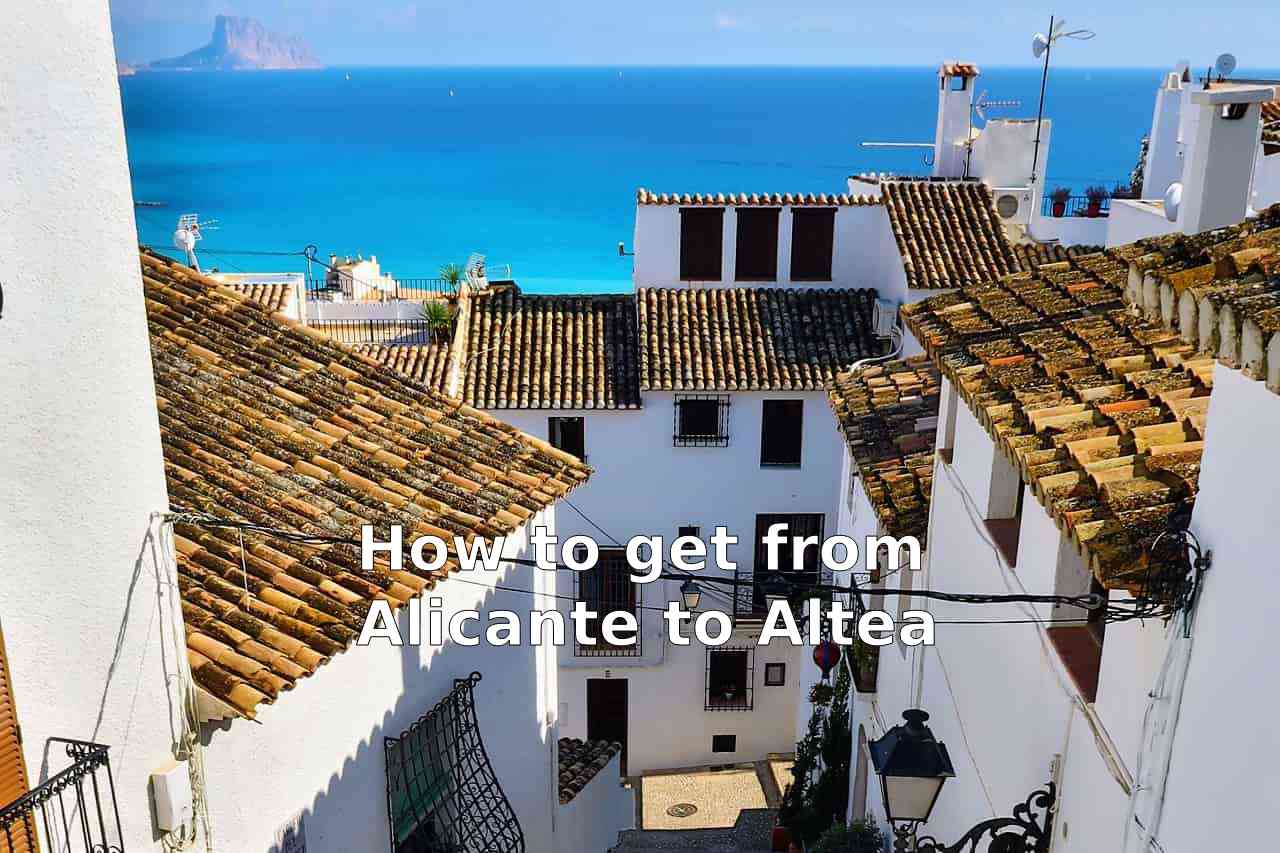
In this post, we share the different options you have to travel from Alicante to Altea, a hidden gem on the Costa Blanca. This picturesque coastal town offers a blend of natural landscapes and architectural charm, making it a must-visit for those touring Alicante.
If you’re in Alicante and looking for a coastal getaway, Altea is an excellent choice. Below, we detail everything you need to know to travel from Alicante to this charming town.
How to get from Alicante to Altea: all the options
If you wish to travel from Alicante to Altea, you can opt for a taxi, bus, TRAM, or car.
Taxi
Travelling by taxi from Alicante to Altea is a practical and convenient option, especially for those seeking a direct journey without the hassle of timetables or changes. On Mitaxi.net, you can book a taxi from Alicante to Altea starting at €83. The journey takes about 47 minutes.
Bus
The bus is an economical alternative to reach Altea from Alicante. Buses depart from the Alicante bus station, located near the port. Weekday timings are from 7:15 to 18:30 (4 buses), Saturdays from 9:00 to 17:15 (5 buses), and Sundays from 7:15 to 17:00 (8 buses). The ticket price is €6.10, and the journey lasts approximately 1 hour and 25 minutes (with 4 stops).
TRAM
Another option to get to Altea is Alicante’s TRAM. Though referred to as a train, it’s actually a light metro connecting the main towns of the province. To reach Altea, first head to Luceros Station and take line 1 to Benidorm, which takes 1 hour and 15 minutes. Then, change to line 9 towards Denia, and you’ll arrive in Altea in 20 minutes. The service runs from 5:00 to 22:00, with hourly departures. The entire journey takes about 2 hours, and the total cost is roughly €6. It’s the slowest mode of transport for this route.
Car
Travelling by car is a comfortable and flexible option. The recommended route is the AP-7, and the journey takes about 50 minutes, depending on traffic. The total distance is 52 km, and the estimated fuel cost is €6.
What to see in Altea?
Once in Altea, don’t miss the chance to explore its old town, stroll along the delightful promenade, and admire the iconic white facades that define the town’s landscape. If you’re seeking a detailed guide on the best attractions and activities in Altea, we invite you to read our post on “What to see in Altea in one day“. There, you’ll find top tips and suggestions to make the most of your visit.









